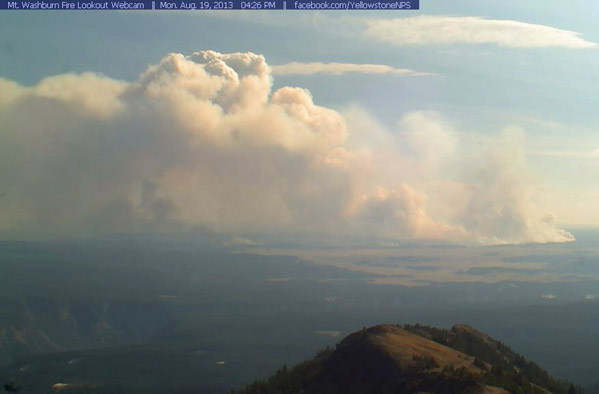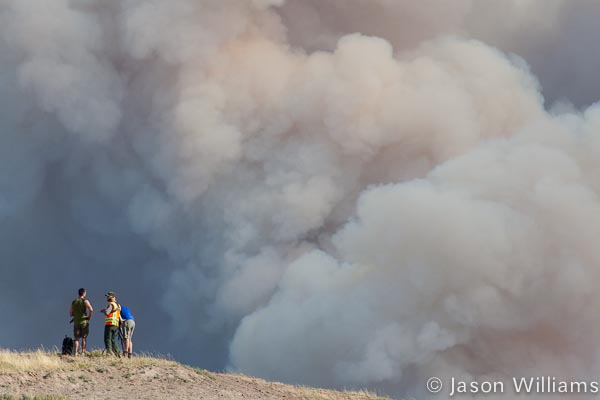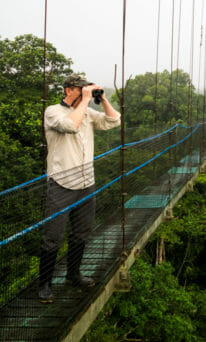
The fire season in the Greater Yellowstone has just turned on and as usual visitors with plans to vacation here are starting to get concerned. Like most years, the national news picks up stories about how the west is burning down with grim photos of scorched earth and flames licking at our doorsteps. The reality of fire in the west is much different, especially in remote places like Yellowstone and Grand Teton National Parks. Though forest fires are always a concern for anyone with homes bordering wildlands, the truth about forest fire is that it is an integral part of the ecosystem and an annual occurrence in the western United States. This year is no exception and for the most part has been a mild fire year in the Yellowstone region.
Yellowstone in 1988
In 1988 one third of Yellowstone burned with over 780,000 acres of the park burned. Vast areas were scorched and the American public was furious and saddened by what they perceived as a great tragedy. In fact, the fires of 1988 were long overdue and created what is now a much more healthy and vibrant ecosystem in Yellowstone National Park. Due to the uproar from the media and the public, both the park and academia launched study after study into better understanding forest fire and the role of fire in diverse ecosystems. Forest fire ecology wasn’t born by the 1988 forest fires but the field definitely matured and gained momentum.
What we learned from all these studies is that conifer forests have evolved to at least tolerate regular fires and in most cases the entire ecosystem required regular fires to function and remain healthy. In the case of Yellowstone, 80% of the forest is lodgepole pine which has evolved to expect fire about every 75 to 100 years. These trees produce a specialized cone which remains sealed until it is burned. When a fire burns the forest, these serotinous cones, will burst open and scatter the seeds over the newly cleared forest floor. Some studies have indicated that as the trees mature they begin to produce more serotinous cones as the likelihood of another fire increases. As the trees approach the average fire interval of the region they reach a peak production of the cones. That, to me, is amazing! The trees actually NEED to burn in order to better regenerate.
In other words, what we see as destruction these trees, 80% of the forests of Yellowstone, see as a chance to successfully reproduce. Through further study of the aftermath of the great fires of 1988, we learned that most of the other species that call Yellowstone home also benefited greatly in the long run. Take a walk through a dense mature lodgepole forest and you will notice how few plants live on the forest floor. Then walk into a burned area about 3 years after a fire and it will look like a meadow filled with grasses, flowers and sedges. A few years later you will start to see new trees coming up surrounded by a plethora of plants that you will rarely see thriving in the shade of a mature stand of trees.
The other thing you will notice about these burned areas is that even today you will see dead trees still standing from the 1988 fires and others littering the ground that have been blown to the ground by wind. These logs, stumps and trunks that appear to us to be ‘a waste’ or ‘sad to see’ actually provide tremendous habitat for birds, insects and small mammals among other organisms that thrive in Yellowstone. Again a mature forest just does not have the variability of a landscape that is a patchwork of areas in different stages of forest succession.
In the end fires will happen and as long as they aren’t threatening human life and property, forest fires are good for the ecosystem and the plants and animals that call this place home. For travelers heading to Jackson Hole and Yellowstone over the next month just keep in mind that there can be temporary road closures and smoke is common depending on where the wind is blowing in relation to the fire. Though the smoke can get in the way of great landscape shots the smoke in the air can create great sunrise/sunset shots and warm the light making wildlife photography better! It’s interesting to note that even Williams Henry Jackson, the first photographer to make photos of the Tetons and Jackson Hole in 1872 struggled with the haze of smoke from naturally occurring forest fires.
Current State of Grand Teton and Yellowstone
Currently there are no major fires in Grand Teton National Park and 4 fires burning in Yellowstone. The main fire in the photo above is currently being reported at about 4,000 acres and probably growing due to strong winds. It is burning on the east side of the lower loop which won’t affect access to most of the park’s main attractions (with the exception of Mud Volcano). It is again important to note the scale of the landscape – Yellowstone is 2.2 million acres meaning that only a very small fraction is affected. Even in 1988 when fires were raging across the park, Yellowstone remained opened for business with only temporary closures when one of the many fires approached a roadway, trail or structures.
Here is an update from Yellowstone emailed to us earlier today that might help with travel plans. We will keep you posted as things change:
August 19, 2013 – 11:00 a.m.


